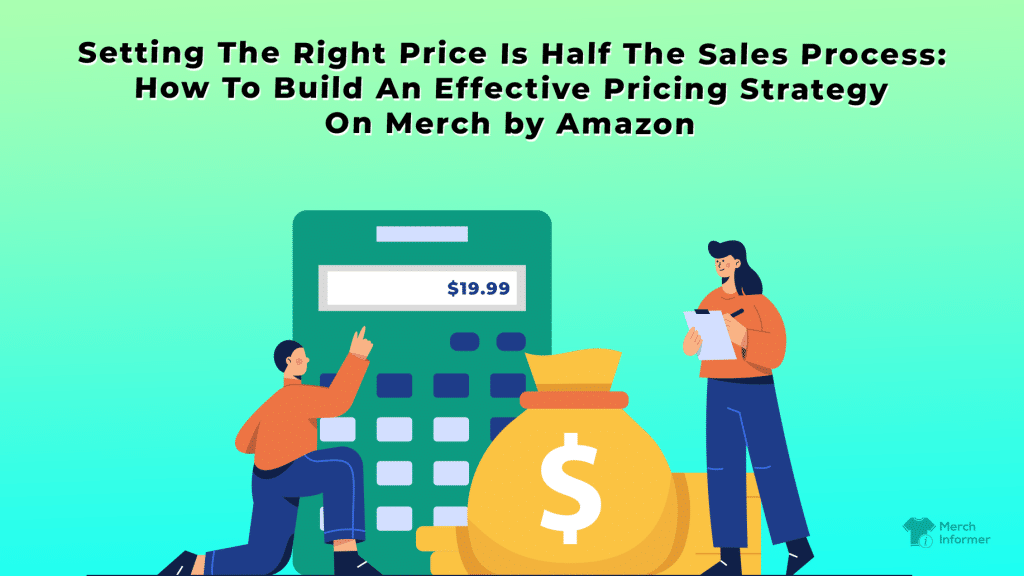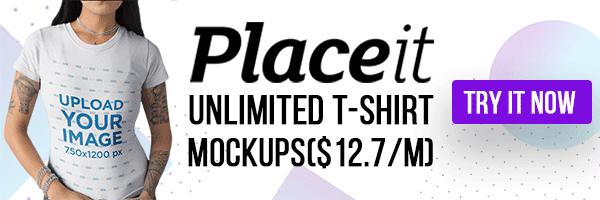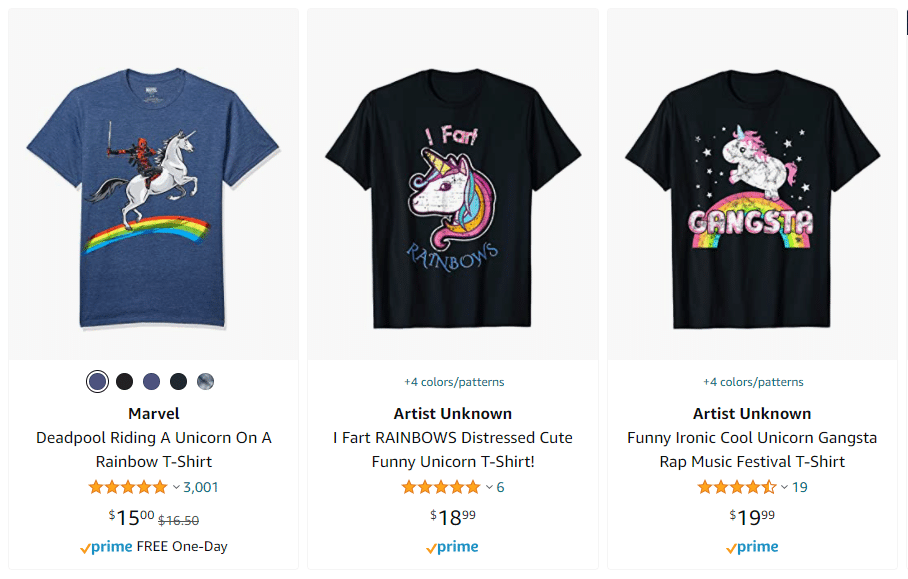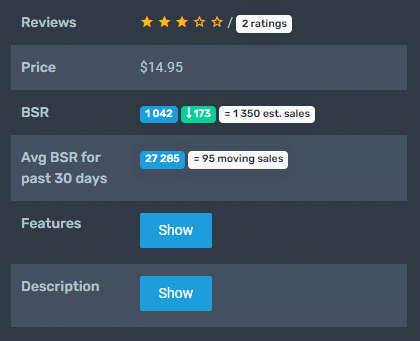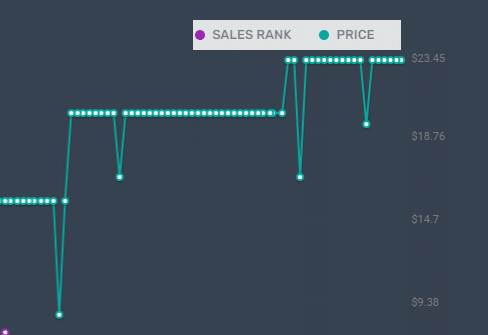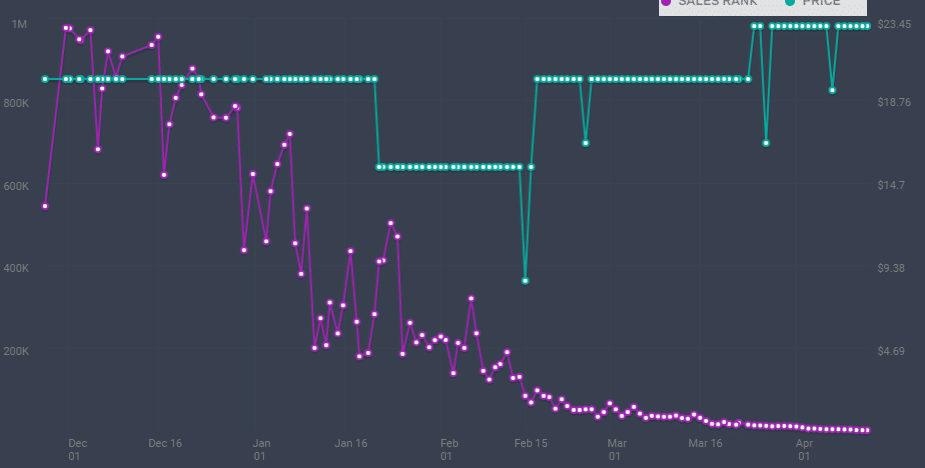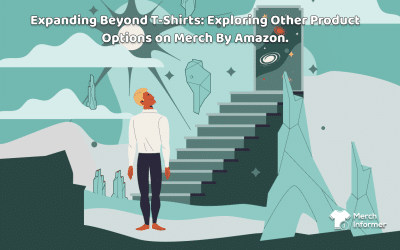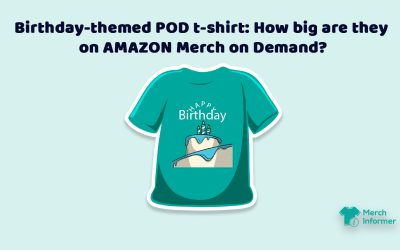Setting The Right Price Is Half The Sales Process: How To Build An Effective Pricing Strategy On Merch by Amazon
Merch by Amazon offers Sellers the opportunity to create a lucrative side hustle that generates a steady income. For some users, selling print-on-demand merch on Amazon even turns out to be a reliable full-time job.
However, several requisites have to be met before reaching that point. Some of the things on your agenda will be creating outstanding merch designs, optimizing your listings with the right keywords, knowing your target audience, and others.
But most importantly, you’ll need a bulletproof pricing strategy.
Why Pricing Matters On Merch By Amazon
A lot of newbie merch Sellers on Amazon neglect the importance of creating a sound pricing strategy when listing their designs. In truth, Merch by Amazon is an extremely price-sensitive platform, where price plays a crucial role in buyers’ decision-making process. It can also determine whether or not your products will be seen by potential buyers.
Let’s discuss this point.
Rankings
You already know that the way you optimize your listings with keywords, images and product descriptions will affect how your products are ranked on search results. You’re probably also familiar with the fact that most buyers will not look beyond the first or second page of search results. Why? Because it’s less time-consuming and the first results are the actual top-sellers. But perhaps what you don’t know is that your product price also makes a difference in your rankings.
Amazon works with certain algorithms to ensure that it’s showing buyers the most relevant and best-priced products in search results. Let’s say someone searches for the keyword “mandala hoodie”. You currently have a mandala hoodie design in your Merch by Amazon store, but you’ve chosen to price it higher than the competition. While most products are priced at $30, yours is priced at $39. Because of Amazon’s algorithm, your competitors’ products will be shown above yours, leaving your design in the shade, even if it’s much better and more attractive.
Competition
As a result of the mentioned example, we can also conclude that price matters on Amazon as it puts you in a certain level of competition with others selling similar products. Even if we scratch out the importance of rankings and imagine that you make it to the first page of results with a higher price than most, your product won’t be as competitive. There will be tens and hundreds of other similar products that buyers can buy for cheaper.
Buyers’ decision making
Ultimately, price on Merch by Amazon is key when it comes to your customers’ decision-making process. While one price may be affordable for a certain target group, the same price may be completely off the table for another type of buyer. Understanding the characteristics of your customers will help you determine what price works best for the different types of merch you offer.
Pricing Rules On Amazon
To create a well-backed pricing strategy, you must be equipped with the right information and have the ability to make informed decisions. When it comes to pricing rules that work on Amazon, the most important thing to do is to have two vital pieces of information for any product that you sell – your bottom price and your supreme or highest price.
Product bottom price
Calculating your bottom price will help you remain profitable for every sale that you make on Amazon. Why? Because you’ll know that selling for anything less than your bottom price won’t generate any profit. The concept behind the bottom price is to take into account every cost that goes into your product creation, manufacturing, design, shipping, and more.
For Merch by Amazon, you’ll have a commission fee for every printed product. Some of the things that are included in the fee are manufacturing costs, material costs, costs of returns, exchanges, customer services, and others. This fee is fixed for different products and subtracted from the purchase price together with any applicable tax. This makes up the royalties that Sellers earn by making sales on Merch by Amazon.
Product supreme price
The highest price that you can ask for, on the other hand, can be determined by looking at your competitors. A simple search on Merch Informer for the best-selling products in your category and niche will reveal what the highest price is for similar products. You can also look at the first page of results for a specific keyword like the “mandala hoodie” example. The general rule is that you can raise your price 20% over the highest price on page one, considering your design is excellent, you have experience, reviews, and know what you’re doing.
But why does this matter? Because knowing your lowest and highest price will help you confidently choose a price strategy that will always be profitable in the long term.
Pricing Strategies That Work
There are a few popular pricing strategies on Merch by Amazon that work for Sellers with different levels of experience. Some of them aim to increase profits, while others aim to create a positive reputation and attract reviews and higher rankings.
Growing your reputation and attracting reviews
If you’re a beginner Seller with a few designs on Merch by Amazon and not a lot of attention from buyers, your pricing strategy should aim to grow your popularity, get you higher up in rankings, and encourage customer reviews.
The idea here is to price your products lower than the competition. When buyers sort their search according to price, you’ll always be shown first, even if the difference in price is only a cent or two compared to other products. As a result, you’ll make less profit but will enjoy more sales and potentially more reviews if your products and experience meet customer expectations.
A premium pricing strategy
This pricing strategy is suitable for more experienced Sellers who have already created a brand image, have fully optimized their listings, and have validated that their designs are attractive. It’s also a good idea for those selling premium merch or extremely niche designs. With the premium pricing strategy, you intentionally set high prices for your designs. As a result, you are likely to enjoy free shipping, which is a key selling point. You will also generate a higher profit despite the risk of making fewer sales as your royalties will be higher.
The mountain climber strategy
Sellers who adopt this strategy set a very low price for new products that they list on Merch by Amazon. Once the product starts gaining popularity, they gradually increase the price, until they reach the highest selling price possible for the category or niche. This strategy is perfect if you want to explore how the market reacts to different prices. There’s also a lot of flexibility to it as you can always reduce the price if you see that you are no longer generating sales at a higher price. Although a lot of Sellers have improved their rankings using this method, it’s also risky as it may push away loyal customers who prefer your designs because of their usually affordable prices.
The golden middle
This pricing strategy is perhaps one of the best ones for Sellers to strive for. Here, the idea is to set a price that is marginally below the market’s average, but still profitable for you as a Seller and competitive on Amazon. Sometimes, the difference in price may only be a few cents. For example, the average price in the niche is $20 and your product is priced at $19.98. Although this may not seem like a significant difference, it does play a role in rankings and customer psychology.
Price Deviations: When Is It Okay To Increase Or Decrease?
No matter which pricing strategy you’ve chosen, price deviations are inevitable at one point or another. So, when is it reasonable to raise or drop your prices?
Lowering your prices
An important note to mention is that lowering your price can increase your visibility. Why? Because “on-sale” products are specifically shown to buyers with a priority. This is a great tactic for slow-selling designs that are not generating a lot of sales. In addition, there are unwritten seasonality pricing rules that most Sellers abide by, not only on Amazon but on all ecommerce platforms.
For instance, buyers expect to see Christmas sales, New Year’s sales, Easter sales, and so on. You can use Merch Informer’s insights to see when Sellers start reducing their prices and be prepared on time. As a result, you’ll enjoy more sales, a lower BSR, and an opportunity to increase prices after the holidays, and still maintain a reasonable sales volume.
Increasing your prices
As a Seller, you’re likely to be tempted to increase your prices at some point to generate higher royalties and ultimately make more profits. The best time to do so is once your product has gained positive customer reviews, high ratings, visibility and reputation.
Let’s look at an example.
Imagine that you are selling a unique, t-shirt design that has been generating sales for months. However, your profits aren’t great as you’ve priced it at the lower end of the pricing spectrum. Say the original price for your design is $15, which is lower than that of your competition. You can increase it to $15.50 at first and monitor the results. If you notice that sales volumes aren’t changing, you can try selling it for $16 or even $17. Again, check how your sales are influenced and observe where the highest profitable point is.
Sometimes, a drop in sales volumes may not negatively impact your profits. For instance, you may have generated 100 monthly sales at $15 for a royalty of around $2 per sale. Let’s suppose that you can increase your price to somewhere around $25 for a royalty of around $9 per sale and you’re able to generate 50 monthly sales or half of the original volume. In the first scenario, you’ll receive royalties of $200, while in the second example, you’ll take off with royalties of $450. Surely, most Sellers would prefer the latter.
Wrapping Up
When it comes to creating a pricing strategy on Merch by Amazon, there is no right or wrong answer. The right decision comes down to how experienced you are as a Seller on the platform, what niche and category your products are in, and what your ultimate goal is. What matters most is to have insights at your disposal that you can use to remain flexible.
Remember that doing your research will help you position your products in a way that will help you enjoy the sales and profits that you are after.
And of course, for all your research needs, there’s Merch Informer.
